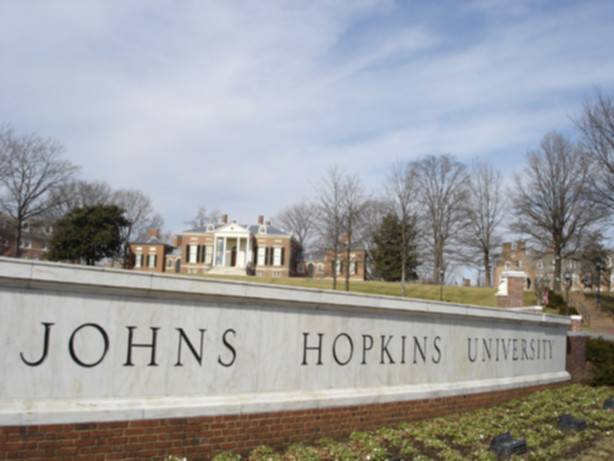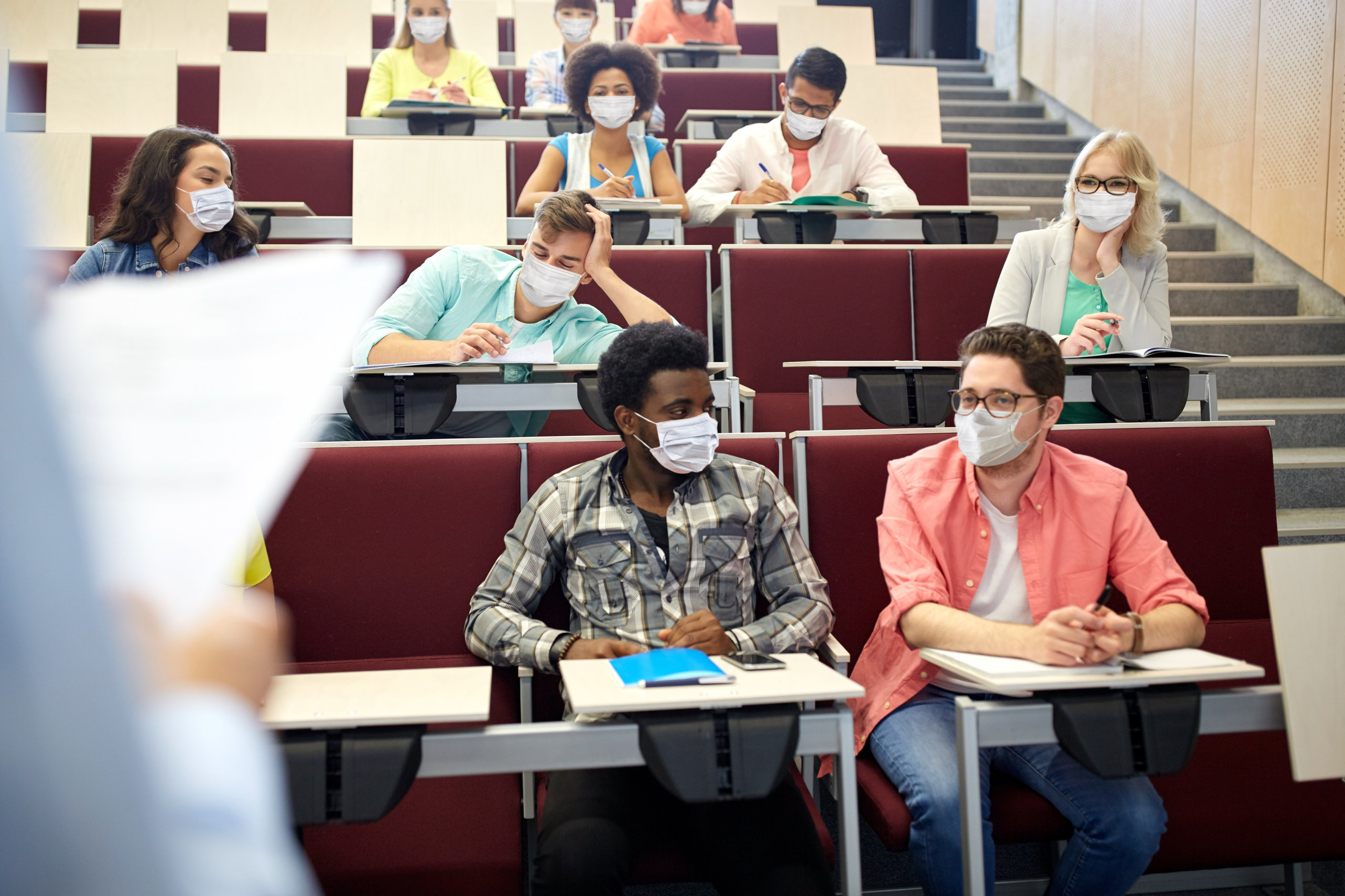Colleges across the United States have started reinstating mask mandates in the final weeks of classes amid a rise in Covid cases.
Colleges in Washington, D.C., New York, Pennsylvania, Massachusetts, Connecticut, and Texas have reimposed a range of virus measures, with Howard University moving to remote learning amid a surge in Covid in the nation’s capital.
Columbia University, the affiliated Barnard College, and Pace University have all started requiring masks again in at least some indoor settings. They reinstated the mask mandate, which requires students to wear non-cloth masks, on Monday “based on the current situation and in an abundance of caution,” according to school communications obtained by The Post.
Instructors, however, still have the option to remove their masks while teaching.
“I feel like last summer it was everyone was like, ‘Oh, this is it. We’re nearing the tail end,’” recalled Nina Heller, a junior at American University in Washington D.C., where administrators brought back a mask mandate about a month after lifting it. “And then that didn’t quite happen, and now we’re here at summer again, and there’s kind of no end.”
This comes just a short month after the university dropped the initial requirement on March 14.
“As much as we would like to move on and think that the pandemic is over, and I think we all would like that to happen at this point, it’s wishful thinking,” said Anita Barkin, co-chair of a Covid task force for the American College Health Association. “The pandemic is still with us.”
Philadelphia recently brought back its mask mandate, leading the University of Pennsylvania and Temple University to again require them starting Monday. Although the city ended the mandate Thursday just days after reinstating it, the colleges haven’t made any changes.
In Washington, D.C., Covid has been running through politicians as infections more than doubled in April. Georgetown and George Washington University have reinstated their indoor mask mandates while Howard University is moving toward online learning again.
Johns Hopkins University, in Baltimore, Maryland, announced this month that it was testing all undergraduate students twice weekly through Friday, noting a steep rise in cases. The school also said masks would be required not just in classrooms, but in places like residence hall common areas.

A private liberal arts school, Williams College in Massachusetts, was opting to allow professors to decide what was best for their classroom; however, they reinstated the indoor mask mandate for everyone regardless of professor preference.
“I think students are really feeling like people they know are dropping like flies,” said junior Kitt Urdang, who’s had a half-dozen friends test positive in recent days. “There’s definitely been a lot more uncertainty than there’s been on campus since Covid hit.”
A CUNY spokesperson told The Post that masks are optional at its campuses and offices, though many people continue to wear them.
“The University monitors CDC guidelines and regularly consults with our State and City health officials,” he said. “Should the circumstances require a reconsideration of this or any other policy, the necessary changes to keep the CUNY community safe will be made.”
Fordham and St. John’s universities are still mask-optional for vaccinated students.
“The good news is that people who are vaccinated are at very low risk of serious infection even if they test positive,” wrote Brian Anderson, executive director of Emergency Management and Environmental Health and Safety. “But our hope is to keep case rates as low as possible to protect everyone in our community.”
As these “higher institutes of learning” resort to the masking that we’ve been told hasn’t really done much to stop the spread of the virus, one has to wonder why they’re repeating failures.
Let us not forget that the main fraud himself, Anthony Fauci, even said not to wear masks.
According to a clinical infectious diseases article:
In this review and meta-analysis, we analysed the collective evidence from published RCTs and observational studies in order to identify major gaps and methodological shortcomings in the current literature and develop evidence-based recommendations for the use of masks and respirators in healthcare settings.
We found evidence to support universal medical mask use in hospital settings as part of infection control measures to reduce the risk of CRI and ILI among HCWs. Overall, N95 respirators may convey greater protection, but universal use throughout a work shift is likely to be less acceptable due to greater discomfort.
Our analysis confirms the effectiveness of medical masks and respirators against SARS. Disposable, cotton, or paper masks are not recommended.
The confirmed effectiveness of medical masks is crucially important for lower-resource and emergency settings lacking access to N95 respirators. In such cases, single-use medical masks are preferable to cloth masks, for which there is no evidence of protection and which might facilitate transmission of pathogens when used repeatedly without adequate sterilization [8].
We found no clear benefit of either medical masks or N95 respirators against pH1N1. However, current policies mandating standard and droplet precautions when performing routine care for influenza patients are reasonable. RCTs conducted in community settings have demonstrated protective effects of medical masks in combination with hand-hygiene and other infection control interventions [53].
Overall, the evidence to inform policies on mask use in HCWs is poor, with a small number of studies that is prone to reporting biases and lack of statistical power. Multicenter RCTs with standardized protocols conducted outside periods of unusual epidemic events and including the measurement of compliance and fit-testing would overcome many of the methodological difficulties of current studies, including low statistical power, the use of concurrent epidemic control measures, and unusually high compliance during epidemics.
Large, well-designed studies would also enable subanalyses to investigate the role of mask use against different types of infections [54], clarify the circumstances under which rPPE use is most warranted, and yield valuable information about the role of different transmission modes. The inclusion of relevant controls is of paramount importance. Because the source of infection cannot always be ascertained, control groups could include HCWs who do not have any patient contact.
In addition, the protective effect of masks is likely to be related to the baseline risk of infection, because outbreaks with higher attack rates offer more opportunities for infection. We recommend that studies indicate the baseline risk of disease, either from a nonintervention group or occupational health records. This is particularly important for case-control studies, for which the interpretation of the OR as a measure of protective effect is problematic in high-incidence scenarios.
We’re taking massive steps backward as people cling to their masks and the experimental gene therapy in the mRNA jab. Anyone who dares question state-sanctioned science is quickly silenced and removed from social media.
Do not comply. Continue questioning everything.
